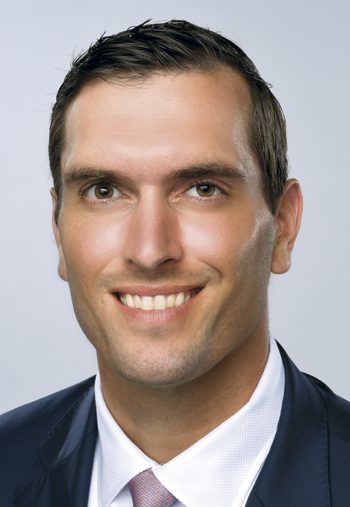SURVEYING THE BENEFITS LANDSCAPE
Insurers adapt to the needs of today’s dynamic workforce
By Thomas A. McCoy, CLU
In practically every type of business, employees often describe their workplace as constantly changing. It may be because competition alters their employer’s course. Or new upper- or middle-level management personnel come on the scene. Sometimes it is technology, designed to bring personal productivity, that creates personal upheaval.
One thing that doesn’t change is that an employee benefits program is the dominant source of financial protection and security for most workers. Whether it’s newer niche products or traditional benefits offerings, their protection is coming from the workplace, and they know it. Aflac’s 2019 WorkForces Report shows that 85% of employees see a growing need for supplemental benefits (up from 63% in 2014).
That’s good news for voluntary benefits products providers and brokers. There’s also good news from the employers’ point of view. A strong economy has intensified competition to hire and retain high-quality employees. Although employers are still focused on reducing benefits costs, their attention to cost control is not as dominant as it has been in recent years. They are becoming more attentive to the goal of hiring and retaining employees.

—David Healy
Senior Vice President, Group Benefits
Sun Life U.S.
Data from The Guardian’s annual Workplace Benefits Study shows that between 2014 and 2019 the benefit objective of employers that grew the most was “attracting and retaining talent.” It was up 24 percentage points (from 52% to 76%) in that timeframe—the largest increase among six major benefits objectives. “Cost control” as a benefits program objective grew five percentage points over the same period of time (from 77% to 82%).
Aflac’s 2019 WorkForces Report also bears out this trend. According to the report, 28% of employers ranked “staying competitive in today’s marketplace” as their top benefits objective. Over the same period, the study showed that those ranking cost control as their top business objective fell from 27% in 2014 to 15%. The independently conducted study included responses from 2,000 employees and 1,200 business decision makers in organizations of various sizes and industries.
Bob Ruff, senior vice president, growth solutions, for Aflac, says, “You have to be sure you’re offering a benefits package that is aligned with the needs of an individual employee population. Then you have to be able to explain those product choices effectively to employees.”
The communications piece has been a challenge for voluntary employee benefits providers. In Aflac’s study, 37% of employees said they need more information when making benefit choices; 22% did not feel confident they understood what they signed up for in the most recent enrollment.
“We’ve got to be able to communicate with employees in the way they prefer,” says Ruff. “Our preferred method is a face-to-face setting; we also use a phone enrollment using telephonic technology. The least preferred for us would be a self-enroll situation, but helping them with pre-enrollment communication material that explains options in simplified language.”
Aflac’s WorkForces Report found that large numbers of American workers are stressed about critical health insurance decisions. Around two-thirds of Millennials (ages 23-38) and Gen Z (ages 18-22) agreed that “trying to understand what insurance or benefits I need is stressful.” Among older workers (Gen X and Boomers), 54% find the process stressful.
That stress has a cost. The study shows that more than half (55%) of employees spend less than 30 minutes researching their benefits options, and 93% typically choose the same benefits year after year. Further, the Aflac research indicates that overall benefits satisfaction among employees has declined from 61% in 2018 to 52% in the current study.
David Healy, senior vice president, group benefits, Sun Life U.S., says that historically “there were both product gaps (not enough employers were offering voluntary products) and knowledge gaps (employees didn’t understand them well).” Today, he says, that situation has improved, but that there are still knowledge gaps.
“The industry needs to educate employees about how individual products can address their needs,” Healy says. “That’s why enrollment has become so much more important—so people understand what financial risks they are taking, and what options they have to close those gaps.
“We have a range of enrollment options that we offer directly,” he adds. “In the small end of the market we have benefit counselors for employers that want to do enrollment events. We also have enrollment meetings at employers where we work with brokers.”
Sun Life also owns Maxwell Health, a technology company, which is configured to be an integrated solution for both enrollment and benefits administration. “Our goal is to make it easier for employers to offer our benefits and for employees to understand their choices,” Healy says.
An employer’s health plan is the cornerstone of most employee benefit plans. Increases in employee health premiums along with rising deductibles and copays continue to drive the growth in voluntary supplemental products. Another trend in health insurance, also tied to rising costs, is the use of self-insurance.
According to the 2019 Kaiser Family Foundation Health Benefits Survey, 61% of workers’ health insurance is in a plan that is either partially or completely self-insured. That includes 17% of small firms (3 to 199 workers) and 80% of large firms (200 or more workers). The percentage of covered workers has been stable for the last 10 years across all size firms.

—Bob Ruff
Senior Vice President, Growth Solutions
Aflac
To make it possible to cover unpredictable and potentially catastrophic health claims, employers that are self-insured depend on stop-loss carriers. The stop-loss carriers’ experience in handling these large exposures provides a good barometer of the trend in medical claims.
Greg Sullivan, senior vice president of strategy at stop-loss company HM Insurance Group, says, “The biggest trend in medical claims now is the impact of the so-called ‘gene therapies’ and ‘orphan drugs’ as they enter into the mainstream of treatments. This has been 30 years in the making and impacts both fully-insured and self-insured plans because of the high cost of these treatments.
“For example, Zolgensma, a drug therapy for Spinal Muscular Atrophy, is priced at more than $2 million for a single infusion.
“Individual stop-loss attachments are typically in the range of $25,000 for small groups to $400,000 to $500,000 for larger groups, so with these new drugs and therapies costing in excess of $1 million to $2 million, the stop loss comes into play almost every time these treatments are utilized.”
Sullivan sees the potential for growth in the self-funding of medical plans among small to mid-sized employers, “provided they have a stop-loss coverage to protect themselves financially.” He also notes, however, that “there has been activity at the state level to make stop loss less attractive and even attempts to make it illegal for small groups. So, further growth of self-funding really depends on the political winds at the state level.”
Katie McGrath, head of Accident and Health for Swiss Re Corporate Solutions, agrees that emerging gene therapies and specialty pharmacy risks are shaping the self-insurance/stop-loss business, and she expects that trend to continue. “The challenge for the industry,” McGrath says, “is to accurately predict and price for infrequent but high-dollar medical claims.
“We are partnering with academic and health institutions to gather as much data as possible to better predict the incidence of these claims and ultimate medical outcomes. There is much to be done across all parties in the value chain to share information across the industry.”
In general, she characterizes the stop-loss business as “growing rapidly,” adding that “there is significant interest in captives, which allow smaller employers to participate in self-funding.
As sales of voluntary products have grown, insurers have broadened the coverages provided within their existing menus of traditional products, including accident, hospital indemnity and critical illness. New companies also have entered the market.
In addition, insurers are looking at some nontraditional coverages or perks that could appeal to narrower segments of employees. Insurers are realizing that it makes sense to hone in on serving needs that not everyone has. The Guardian’s Workplace Benefits study found that 70% of employees strongly agree with the statement: “I am more likely to be loyal to a company that offers me employee benefits that are personalized to my needs.”
The Guardian’s study asked employees to name the top “benefits” that would cause them to want to work for an employer. Among the most popular nontraditional coverages or perks were “time off for parental bonding or caregiving” (58%) and a student loan repayment benefit (25%).
Almost 70% of Millennials said that having a student loan repayment benefit would influence their job decision. The Guardian study reported that employers offering loan assistance plans rose from 3% in 2017 to 6% in 2019.
Ruff says, “As we look at our portfolio, we are studying elements of financial wellness programs that could be tied to our broader portfolio of services. We would do it by partnering with outside companies.” An example, he says, would be a bill negotiation service for an expensive medical procedure.
“As different generations establish themselves in the workplace, there will likely be more interest in some of these niche products,” Ruff says. “It could be student loan assistance, cybersecurity, pet insurance or others.”
Healy says benefits providers have an important role to play in offering value-added services to employers. An example is the education Sun Life provides on paid family medical leave. “We’ve been helping brokers and employers understand the laws—who is covered, what is covered, what the benefit amounts are—but also what the law might mean and how to be prepared as the legislation comes along.”

—Greg Sullivan
Senior Vice President, Strategy
HM Insurance Group
Sun Life is in a good position to do this because, Healy notes, “Our U.S. headquarters is in Massachusetts, which is a state that is adopting a paid family medical leave law effective at the start of 2021. As of the start of 2020 we rolled out a generous and expanded paid family and medical leave program for our own employees throughout the country. It gives parents, caregivers and others 16 weeks of paid leave, with eight weeks of additional paid leave for birth parents. Our program also offers everyone at least 26 weeks of paid medical leave. We see it as something we should be doing as an employer but also as a trend we see evolving in the marketplace.”
Benefits executives say the need for traditional products—life insurance, disability and supplemental health offerings—remains strong. In life and disability, it is well documented that large numbers of people are without adequate coverage.
“The place where more and more Americans are going to have access to life insurance is in the workplace,” says Healy. “Both in employer-paid and voluntary life we have a big responsibility.”
Gene Lanzoni, assistant vice president, thought leadership, Guardian Life, says, “Fewer people own life insurance outside the workplace, and among employers that do offer life insurance, the amounts are flat or declining in certain segments, such as smaller firms. Our research shows that one in four working Americans have no life insurance.”
Lanzoni says Guardian’s research also shows that two-thirds of working Americans have no last will and testament. He points out that it is available through pre-paid legal plans, which are offered by 11% of employers. “Many life insurance plans also offer will preparation as a value-added feature of their life insurance product,” he notes. “However, it is generally not well-communicated, and most employees who do have access don’t take advantage of it.”
In disability, the need and the coverage gaps are sobering. Aflac’s WorkForces Report found that 39% of employees could not go a month without a paycheck.
Healy notes, “Income replacement is a big deal. It can make the difference between successfully navigating a health event and not. Yet, one in three workers are not covered by a disability product.”
Sun Life recently introduced to employers the option of auto-enrolling employees for short- and long-term disability protection—either on an employer-paid or voluntary basis. Employees who do not want the coverage would need to opt out.
Today’s workplace is dynamic, full of opportunities and challenges. The mission for agents and brokers is to deliver employee benefits that provide financial stability for employees while helping employers build a workforce that is motivated and productive.
For more information:
Aflac
www.aflac.com
Guardian Life
www.guardianlife.com
HM Insurance Group
www.hmig.com
Sun Life
www.sunlife.com
Swiss Re
www.swissre.com
The author
Thomas A. McCoy, CLU, is an Indiana-based freelance insurance writer.





